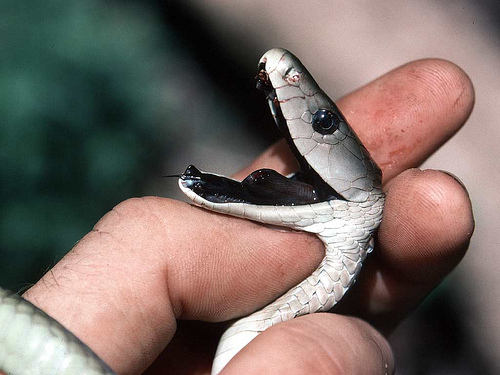Reproduction
Mambas reproduce by sexual reproduction and require both the male and female to reproduce successfully. Mambas are considered oviparous in which they lay eggs. Mating typically occurs in late spring or early summer (October through December). Mambas prefer warmer temperatures during mating season, however, the time frame varies with location. Male Mambas will seek the female mambas at their habitat. Moreover, mambas naturally fight each other in the beginning stages of mating and their level of aggression increases resulting with tension between the two mambas. Female mambas are extremely selective when deciding on a mate, however, it is still not understood why some black mambas are turned down. After the two mambas mate, the female becomes very hostile towards the male and will force the male mamba out of her territory.
Conception usually lasts between fifty to sixty days and the incubation period lasts around ninety days. Female Mambas lay about ten to twenty-seven eggs. Decomposing vegetation aids the gestation period by emitting heat to the eggs. Furthermore, the shells of the eggs allow for water and oxygen to reach to the developing embryo. After the incubation period, neonates emerge from their eggs and measure around twenty-one inches. Once hatched, neonates are able to live on their own and are just as venomous as adult mambas. The lifespan of the Dendroaspis polylepis is about eleven human years.
Click Here to go to Home Page
